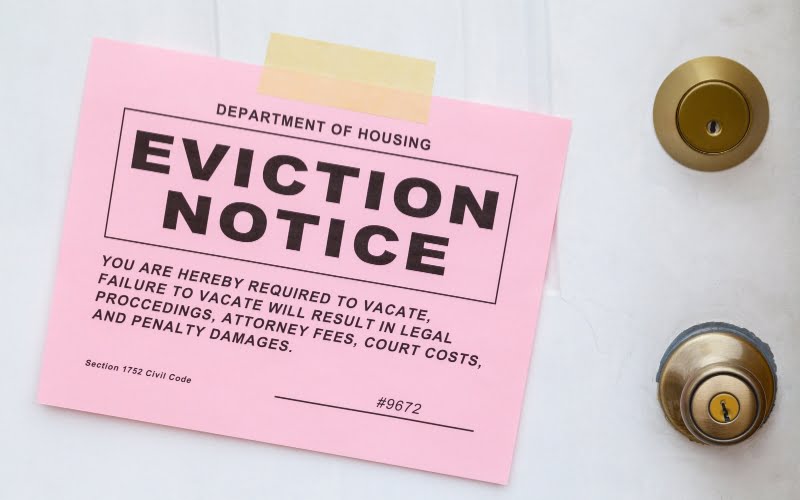Last Updated on March 18, 2024 by Kelvin Nielsen
In Arizona, a writ of restitution is a court order that authorizes a sheriff or a constable to remove a tenant from a property, allowing the landlord to take possession of the property.
A writ of restitution can only be issued to a landlord after a successful tenant eviction process.
The writ gives the tenant only five days to leave. If the tenant leaves on their own, great! However, if the tenant chooses not to, a sheriff or a constable will return and remove the tenant from the property forcefully, if need be.
The following is everything you need to know regarding a writ of restitution in Arizona.
How do I File a Writ of Restitution in Arizona
Below are the steps a landlord must follow to file a writ of restitution in Arizona.
Step #1: Have a legally justified reason to evict the tenant.
The Arizona Residential Landlord & Tenant Act (ARLTA) gives landlords the right to evict tenants for certain lease violations. Specifically, you may be able to evict a tenant for the following reasons.
- Nonpayment of rent
- End of lease / no lease
- Health/safety violation
- Falsifying basic information on the rental application
- Illegal activity
- Repetitive lease violations
- Falsifying criminal/eviction history on the rental application
In other words, you cannot evict a tenant in Arizona just because you ‘feel like it’. You must have a just cause to do so, otherwise the eviction will fail and you may even find yourself in legal hot soup.
Step #2: Serve the tenant with an eviction notice.
Next, you must serve the tenant with an eviction notice. The notice must specify the reason for the eviction, and what the tenant must do within the time specified.
If evicting a tenant for nonpayment of rent, for instance, you must serve the tenant with a 5-Day Notice to Pay or Quit. This will give the tenant up to 5 days to either pay the balance due or move out of the rental unit.
If the tenant pays the balance due, great! However, if they don’t and still continue living on the property, you may choose to continue with the process.
Step #3: File an eviction lawsuit against the tenant in court.
After the 5 days are over, you can escalate the matter further by going to court. You can file the lawsuit (Forcible Entry Detainer) in either a Justice Court or the Superior Court depending on the size of the lawsuit.
If you’re suing the tenant for below $10,000, you must file the lawsuit in a Justice Court. But if the amount exceeds $10,000, then you must do the filing in a Superior Court. This will set you back by $35 and $218, respectively.
Step #4: The tenant is served with a copy of Summons and Complaint.
After your lawsuit has been notarized by the court’s clerk, copies of the Summons and Complaint will be issued. These will then need to be served to the tenant using a process server.
The process server, typically a sheriff or a constable, will need to serve the documents in a particular manner. The following are the options.
- Serve a copy in person.
- Leave a copy with someone who is of suitable age and lives together with the tenant.
- Deliver a copy to the tenant’s attorney, or any other agent authorized to act on their behalf.
You can generally expect the court hearing to be held no later than 5 days after the filing of the complaint.
Step #5: The tenant files an answer.
Arizona tenants have a right to respond to their landlord’s allegations. The tenant must submit the answer on or before the initial appearance.
The tenant can choose to admit or fight the eviction. If the tenant chooses to fight their eviction, the following are some of the defenses they can give.
Step #6: The hearing is held.
Once the complaint is successfully filed, you can expect the hearing to take place within 5 days. Both parties have the option to make the initial appearance via phone or video conference.
The judge can rule in your favor if any of the following happens.
- The tenant shows up and pleads guilty.
- The tenant fails to show up.
- The tenant fails to convince the court by not having a valid defense.
- The judgment falls in your favor after all parties have submitted their case.
If the judgment is in your favor, the court will issue you with a Writ of Restitution. This will give the tenant 5 calendar days to move out after the judgment is entered. The only exception here is if the tenant files an appeal.
Step #7: The Writ of Restitution is issued.
The writ of restitution is the tenant’s final notice to leave the premises. Only a sheriff or a constable can executive the writ, which they must serve to the tenant “promptly and expeditiously as possible.”
If the tenant doesn’t move out of the property, the sheriff or constable will have no option but to throw out the tenant and change the locks.
Filing a writ of restitution in Arizona will cost you $28. You will also need to pay a service fee of $10.
Frequently Asked Questions (FAQs): Writ of Restitution Arizona
Q: How long does a tenant have to move after a writ of restitution in Arizona?
A: Once a writ of restitution has been served on a tenant, they will have a maximum of 5 days to vacate the unit. If they don’t, a sheriff or constable will return and remove them and change the locks.
Q: What happens after a writ of restitution in Arizona?
A: The following series of events may ensue after a tenant is issued with a writ of restitution in Arizona.
- The tenant will have up to 5 days to leave.
- If the tenant doesn’t leave, the sheriff or constable will remove the tenant and change the locks.
- The landlord must hold any personal belongings the tenant leaves behind for a maximum of 14 days. The landlord must also provide the tenant with a Notice of Abandonment.
- If the tenant doesn’t make reasonable efforts to recover the items, the landlord may donate or sell the belongings.
Q: How can a tenant stop an eviction in Arizona?
A: The ARLTA gives tenants the right to fight their eviction. Here is a comprehensive guide on the same.
Conclusion
To successful evict a tenant from your rental property in Arizona, you must first obtain a writ of restitution. You can expect this to take anywhere between 1 to 6 weeks, but can take longer depending on various factors.
It goes without saying that you should avoid wrongful eviction methods when trying to evict a tenant.
Disclosure: The content herein isn’t a substitute for advice from a professional attorney. It’s only meant to serve educational purposes. If you have a specific question, kindly seek expert attorney services.
Sources: https://www.azleg.gov/ars/12/01178.htm, https://www.azcourts.gov/selfservicecenter/Landlord-Tenant-Disputes-Eviction-Actions, https://azcourthelp.org/component/seoglossary/9-eviction/writ-of-restitution, https://www.arizonalandlordtenantblog.com/Rules-of-Procedure-for-Eviction-Actions.pdf,

Hi, I’m Kelvin Nielsen, an experienced landlord and accomplished real estate lawyer. My focus is on answering your questions about renting in the hopes of making your life as a renter or a landlord a bit easier.







